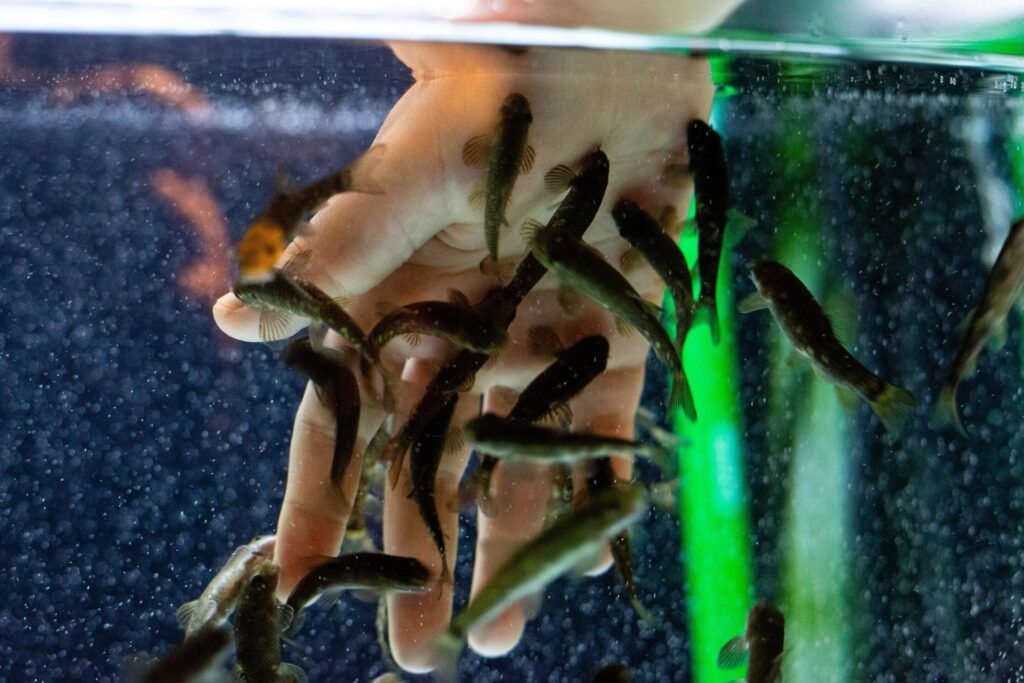
Credit: Unsplash/CC0 Public Domain
Scientists and natural resource managers from Canadian First Nations, government, academic institutions and conservation organisations have published initial results from a unique salmon population monitoring tool. The forefront of marine science.
This groundbreaking new technology, called “Salmon Vision,” combines artificial intelligence with old-fashioned fishing weir technology. Early evaluations have shown that the technology is highly effective at identifying and counting fish species, potentially enabling fisheries managers to monitor salmon populations in real time.
“In recent years, there has been growing hope that underwater video technology will allow us to literally watch salmon return to the river,” said Dr Will Atlas, senior watershed scientist at the Portland-based Wild Salmon Center and lead author of the paper. “This is consistent with the sentiment of many of our Indigenous partners that fish counts need to be automated to make informed decisions while the salmon are still migrating.”
The SalmonVision pilot study is annotating more than 500,000 individual video frames taken at two First Nations-operated fish counting weirs on the Kitwanga and Bear Rivers on the Central Coast of British Columbia.
Developed in a data partnership with the Gitanyow Fisheries Department and the Skeena Fisheries Commission, the first-of-its-kind deep-learning computer model has shown promising accuracy in identifying salmon species: Tracking 12 different fish passing through custom fish counting boxes at two weirs, it achieved an average accuracy rate of 67.6 percent, with scores of over 90 percent and 80 percent for Coho and Sockeye Salmon, the primary species targeted by First Nations, commercial and recreational fishermen, respectively.
“When we envisioned providing fast-track grant funding for projects focused on Indigenous futurism and climate resilience, this was exactly the type of project we were hoping to see happen,” says Dr. Keol Fox, a professor at the University of California, San Diego, and one of several judges for the initial crowdfunding round to develop Salmon Vision.
Real-time data on salmon returns is important for a number of reasons. According to Atlas, many fisheries in British Columbia have lacked data for decades. This has led fishery managers to base harvest decisions on early-season catch data rather than returning salmon numbers. Meanwhile, changing weather patterns, river flows and ocean conditions have made salmon returns more volatile. This uncertainty adds to the ongoing risk of overfishing already fragile populations.
“Without real-time data on salmon returns, it is extremely difficult to build climate-resilient fisheries,” Dr Atlas said. “Salmon Vision’s data collection and analysis can fill that information gap.”
The tool will be invaluable to Indigenous fisheries managers and other organizations in decision-making arenas (providing better information to manage conservation risks and fishing opportunities) and in remote salmon habitat rivers where collecting data in the field is difficult and expensive, he says.
The Salmon Vision team will pilot automated counts in several rivers along British Columbia’s north and central coast in 2023, with the goal to provide reliable, real-time count data by 2024.
For more information:
William I. Atlas et al. “Counting and Monitoring Wild Salmon Using Deep Learning Detection and Tracking” The forefront of marine science (2023). DOI: 10.3389/fmars.2023.1200408
Provided by Wild Salmon Center
Quote: Indigenous-led AI technology holds promise for salmon recovery (October 19, 2023) Retrieved June 5, 2024 from https://phys.org/news/2023-10-nations-led-ai-technology-salmon-recovery.html
This document is subject to copyright. It may not be reproduced without written permission, except for fair dealing for the purposes of personal study or research. The content is provided for informational purposes only.

